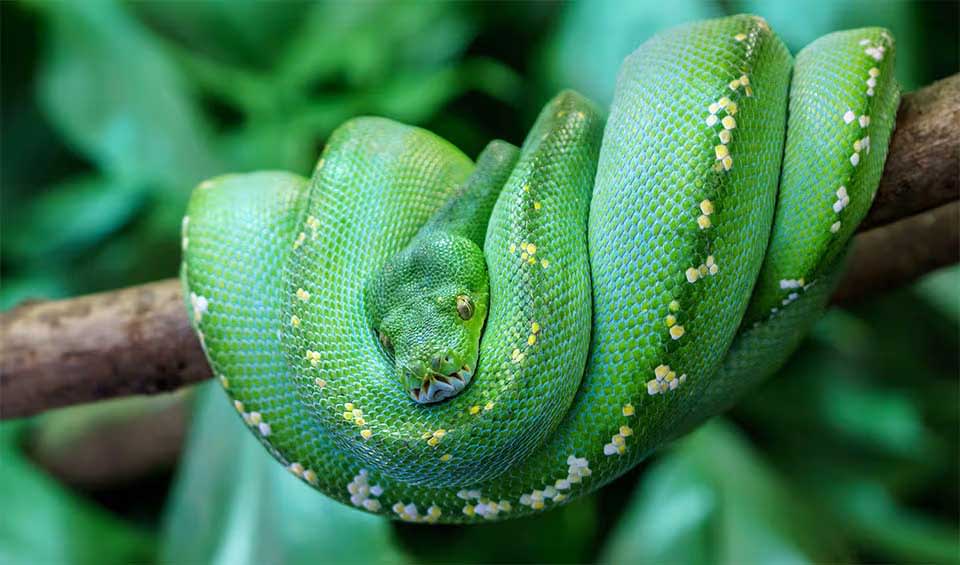Found primarily in the rainforests of New Guinea, parts of Indonesia, and the northern tip of Australia, this snake is a master of camouflage in its leafy environment. It has a slender, muscular body perfectly adapted for life in the trees. Its bright green scales can sometimes be dotted with small blue or white spots, adding to its stunning appearance. The underside of the green tree python is usually a pale yellow or white, and its eyes are a piercing yellow or golden color, giving it a mesmerizing gaze.
One of the green tree python’s most distinctive features is how it rests. Unlike many snakes that lie on the ground or hide in burrows, the green tree python coils itself around tree branches in a distinctive saddle position. It loops its body over a branch, forming a series of coils with its head resting in the middle. This position helps it blend in with the leaves and branches and also allows it to strike quickly at passing prey.
This snake’s diet consists mostly of small animals it can catch in the trees. It has a method of hunting called ambush predation, where it remains still, blending into its surroundings, and waits for an unsuspecting animal to come close. When a prey item gets near, the python strikes quickly, grabbing it with its sharp teeth and constricting it until it suffocates. Once the prey is dead, the python swallows it whole, thanks to its flexible jaws that can stretch around large objects.
Green tree pythons are also fascinating due to their unique life cycle. When they hatch from eggs, the young pythons are not green. They gradually change color as they grow, turning green over about a year. This color change helps them blend into their leafy surroundings as they become more arboreal.
Distribution
 Australia
Australia Indonesia
Indonesia Papua New Guinea
Papua New GuineaAnything we've missed?
Help us improve this page by suggesting edits. Glory never dies!
Suggest an editGet to know me
Terrestrial / Aquatic
Altricial / Precocial
Polygamous / Monogamous
Dimorphic (size) / Monomorphic
Active: Diurnal / Nocturnal
Social behavior: Solitary / Pack / Herd
Diet: Carnivore / Herbivore / Omnivore / Piscivorous / Insectivore
Migratory: Yes / No
Domesticated: Yes / No
Dangerous: Yes / No




